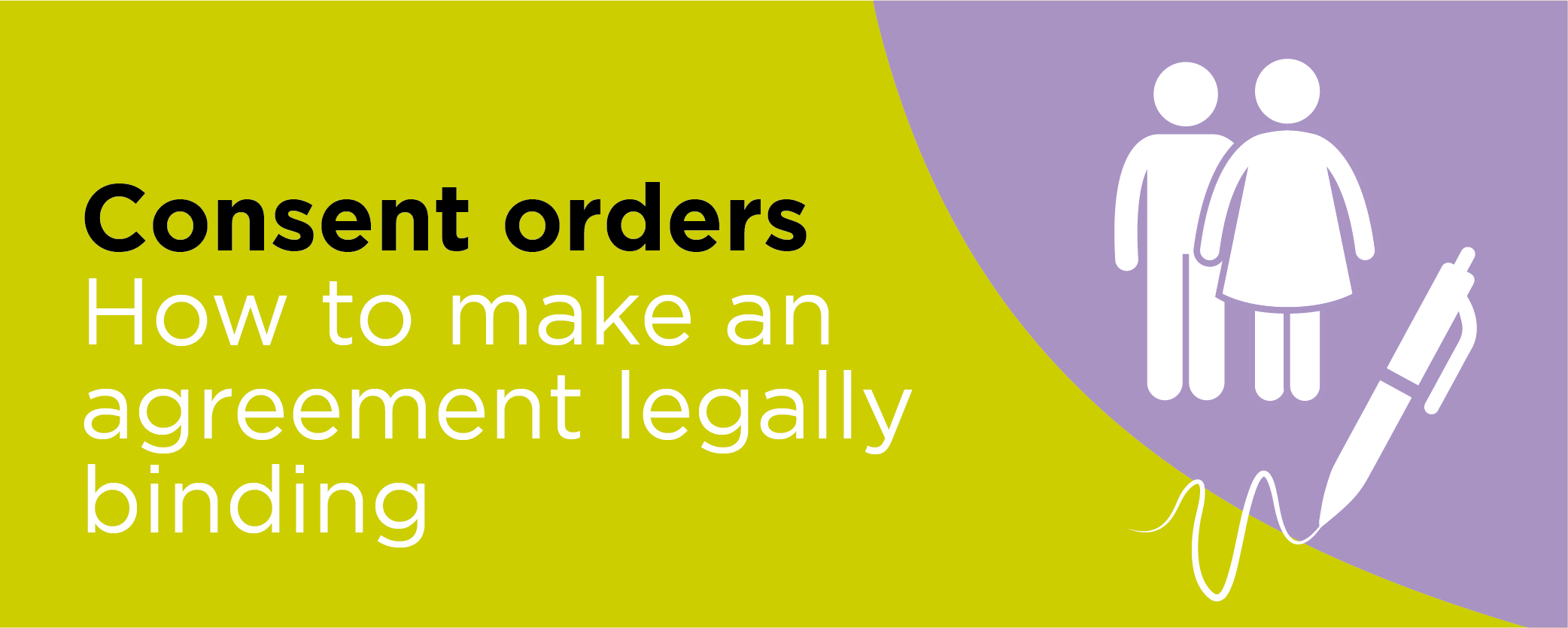- Basildon 01268244144
- Chelmsford 01245453800
- Colchester 01206217300
- London 020 4586 1280

What is a consent order?
A Consent Order is a legally binding document that records an agreement that has been reached between the parties and which has been approved by the court.
Within divorce proceedings, a Consent Order may detail the financial settlement reached. A Consent Order can be drawn up following agreement between the parties and submitted to the court for approval or made by a judge at a hearing.
A Consent Order sets out how the parties are to divide their assets, debts, pensions, and income as a result of their divorce. It will often include a ‘clean break’ clause, which prevents the parties from bringing claims against one another’s assets in the future. For example, if you won the lottery or had the benefit of an inheritance and received a large sum of money and you already have a Consent Order in place that included a clean break clause, this would prevent your ex-spouse from claiming a proportion of your winnings.
Why do I need a Consent Order?
Although strictly speaking the Final Order ends your marriage, it does not deal with settling the financial claims that couples have against each other. In divorce, couples have claims against each other for capital, lump sums, maintenance and pensions.
In the absence of a Consent Order that has been approved by the court, these claims will remain open in the future and could see you facing a claim from your ex-spouse in years to come. A Consent Order is important to document the agreement reached between the parties and to bring an end to the financial claims against one another.
What information do I need to provide?
Both parties are required to complete a D81 Statement of Information form to accompany the application for a Consent Order. The D81 form provides a snapshot of both parties financial positions including:
Income (including earnings, benefits, maintenance and rental income);
Liabilities (such as loans and credit card debts);
Assets (property, bank accounts, business assets and savings); and
Pensions (the cash equivalent transfer value (CETV) of each pension held).
The D81 form also details information relating to the parties respective ages, whether there are any dependent children of the marriage, and whether you are in a new relationship. It also allows for a narrative to explain how and why the particular agreement has been reached.
What is included in a Consent Order?
A Consent Order sets out the agreement that has been reached between you and your ex-spouse as to what will happen to your assets and liabilities.
There may be provisions relating to lump sums, maintenance (to include spousal and/or child maintenance) and details of the time when payments are to be made, if appropriate. It can also contain details of what will happen to your respective pensions and other assets, such as the family home, for example, whether that is to be sold or transferred.
When do I apply for a Consent Order?
The earliest that a Consent Order can be submitted to the court is following the pronouncement of the Conditional Order (the mid-point of the divorce proceedings). It is generally advised this step is taken prior to the application for a Final Order which formerly dissolves your marriage.
You can still submit a Consent Order to the court for approval after the Final Order has been pronounced, although problems can arise if either party has remarried. If one of the parties dies after the Final Order is pronounced but before the finances have been resolved and sealed by the court in a Consent Order, this could have a negative impact on the surviving party as they would not potentially stand to inherit from the deceased’s estate or receive any widow’s pension.
Does a Consent Order need to be signed by all parties?
A Consent Order will need to be signed by both parties who are entering into the agreement. If you and/or your spouse are represented, the Consent Order will also be signed by your respective solicitors.
Do courts reject Consent Orders?
The Consent Order is usually drafted by the Applicant’s solicitor (if they have one) and will be sent to the other party. Once you agree, the Consent Order will then be sent to the court for approval and a judge will review this alongside the D81 Statement of Information form.
It cannot be assumed that the court will approve the draft Consent Order just because you and your spouse have reached an agreement. The judge will need to consider the individual circumstances of you both and refer to the financial information contained with the D81 Statement of Information form to determine whether the agreement reached is fair. If the court determines that the agreement reached is not fair, for example if it does not meet the needs of both parties, the court may reject the Consent Order. It is important to secure independent legal advice to ensure that the agreement you and your spouse have reached is one that is likely to be upheld by the court to avoid the possibility of the draft Consent Order being rejected.
Once a Consent Order has been approved, it will be sealed by the court and a copy will be sent to you and your ex-spouse and your respective solicitors. A Consent Order is valid indefinitely and does not expire.
If you are in the process of divorce and would like to discuss making a Consent Order, we offer a free 15 minute telephone consultation. Please contact one of our specialist divorce lawyers. I can be contacted on 0330 818 3071 or on katherine.parker@birkettlong.co.uk.



Comments